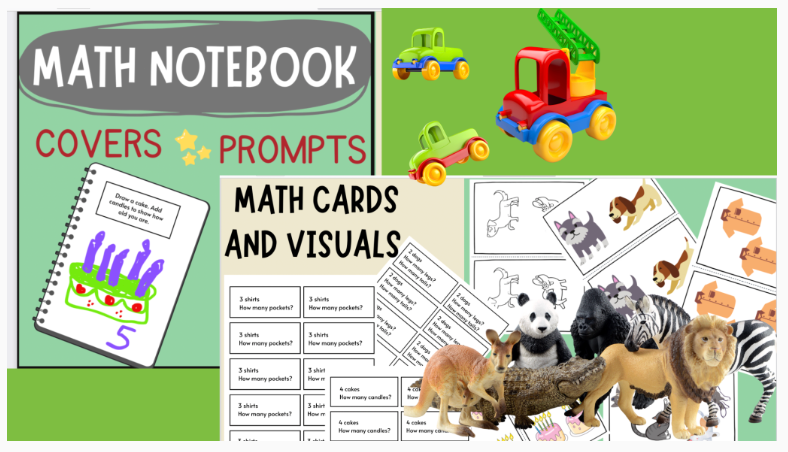
Using Math Journals in Kindergarten: Build Problem-Solving and Confidence
Share

As an educator of young children, one of my goals is to lay a strong mathematical foundation for them. I want to make sure that they not only grasp mathematical principles but also develop a love of math. I have found that the use of math journals is an easy, yet powerful tool to help achieve this goal. Here are some of the benefits as well as some resources and ideas I have used with my students. I hope they are helpful to you!
Benefits of Math Journals for Kindergarteners:
Critical Thinking: Math journals encourage kindergarteners to think critically as they solve problems and record their observations. This process fosters logical reasoning from an early age.
Vocabulary and Communication Skills: Through math journaling, children learn to express their mathematical ideas. This enhances their communication skills as they need to organize and articulate their mathematical ideas before putting them down on paper.
Fosters Creativity: Math journals provide a platform for creative expression. They allow kindergarteners the chance to explore abstract mathematical concepts in very concrete ways. They also help students sparks their innate creativity while SHOWING their thinking.
Ideas to try:
Hands-on Materials: Incorporating tangible materials such as toy vehicles and engaging toy animals can make mathematical concepts more concrete for young learners.
For example, this month we are teaching addition and subtraction. My students are using these toy vehicles and cute toy animals to represent different numbers and to act out addition and subtraction stories. Then, they record that information in their math journals. The journals then can serve as a great assessment tool. Parents love seeing their child's math journal during our P/T conferences!
Counting Collections: We use our math journals to record our counting collections. Students draw pictures of objects they've counted such as buttons, unifix cubes, or even leaves collected from the playground. This activity reinforces counting skills and introduces the concept of sets and cardinality.

Math Stories: Again, this is another opportunity for incorporating those fabulous toy vehicles and toy animals. Students use them to create their own mathematical stories in their journals. I also provide prompts such as "How many vehicles and how many wheels?" "How many animals and how many legs?" I encourage students to draw pictures and to write simple sentences to represent their stories.
Happy teaching!
TP
@tanyaparisauthor
Disclosure: Some links in this post are affiliate links. If you make a purchase through them, I may earn a small commission at no extra cost to you. You


